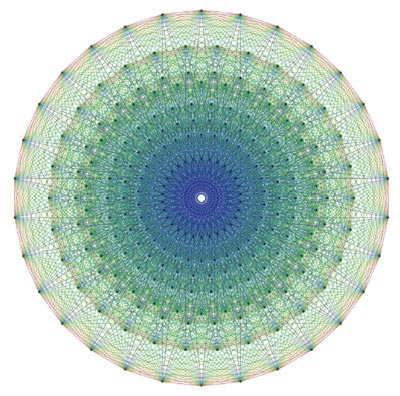Open Neighborhood Seminar
Harvard University Math Department
Fall 2022
August 31 (MT/ONS Opener)
- Speaker: Mike Hopkins (Harvard)
- Title: Sailing, calculus and conformal maps
- Abstract: In the mid 1500s the Flemish cartographer Gerardus Mercator introduced a revolutionary idea into the construction of maps used for navigation. This talk will cover some of the wonderful mathematics in Mercator's idea, and the surprising story of the formula for the integral of the secant.
September 14
- Speaker: Hugh Woodin (Harvard)
- Title: Incompleteness and infinity
- Abstract: A natural speculation is that incompleteness is simply a by-product of infinity. Perhaps one can avoid incompleteness by simply restricting our mathematical scope to the finite. Do we lose anything in this move? The answer I shall argue, is both yes and no. Along the way I will discuss an entirely new approach to the Godel Incompleteness Theorems which has emerged over the last 15 years. I will also introduce some very large finite numbers which arise naturally from finite combinatorics, and indicate how by invoking these large finite numbers, any number theoretic problem of modern interest can be converted to a finitistic statement. It is unclear which would be more amazing for these problems of modern interest: This conversion does not always produce an equivalent problem, or that this conversion always does.
September 28
- Speaker: John Urschel (Harvard)
- Title: From moments to matrices
- Abstract: Moments of a function give concrete information about the shape of the associated graph and have been thoroughly studied in a wide variety of fields. In this talk, we will discuss a number of classic moment problems and their connection to practical problems in numerical linear algebra.
October 12
- Speaker: Lisa Sauermann (MIT)
- Title: On the cap-set problem and the slice rank polynomial method
- Abstract: In 2016, Ellenberg and Gijswijt made a breakthrough on the famous cap-set problem, which asks about the maximum size of a subset of (F_3)^n not containing a three-term arithmetic progression. They proved that any such set has size at most 2.756^n. Their proof was later reformulated by Tao, introducing what is now called the slice rank polynomial method. This talk will explain Tao's proof of the Ellenberg-Gijswijt bound for the cap-set problem, and discuss some related problems.
October 26
- Speaker: Álvaro Lozano-Robledo (UConn)
- Title: From Diophantus to Bitcoin: why are elliptic curves everywhere?
- Abstract: Elliptic curves are ubiquitous in number theory, algebraic geometry, complex analysis, cryptography, physics, and beyond. They were present in Diophantus' Arithmetica (3rd century AD) and, nowadays, they are more relevant than ever as a key ingredient in the algorithms that, for instance, secure Bitcoin transactions or encrypt WhatsApp messages. In this talk, we will introduce elliptic curves, explain their central role in mathematics, and discuss related open problems and applications.
November 9
- Speaker: Gage Martin (MIT and Harvard)
- Title: Straws, pasta, and knots, oh my!
- Abstract: Does a straw have 1 hole or 2? How many shapes of pasta are there? How many ways can you tie a knot? In this talk, we’ll explore these questions through the perspective of a low-dimensional topologist and learn some math along the way.
November 30
- Speaker: Valerio Toledano Laredo (Northeastern)
- Title: Braid groups, differential equations and quantum groups
- Abstract: Braids on a given number of strands n can be concatenated and thereby form a group Bn. The latter possesses two different incarnations: it can be presented on a simple set of generators and relations due to E. Artin (1947), or it can be realized as the fundamental group of the space of configurations Xn of n points in the complex plane. I will explain how each of these incarnations leads to a class of representations of Bn. The topological representations arise from differential equations of Xn which are symmetric under the algebra gl_n of nxn matrices. The algebraic representations arise instead from a deformation of this algebra known as the quantum group U_q(gl_n). Finally, I will tie the knot by relating these two classes of representations.
Organizers: Ana Balibanu ([email protected]) and Dori Bejleri ([email protected]). Please drop us an email if you're curious about the seminar!
